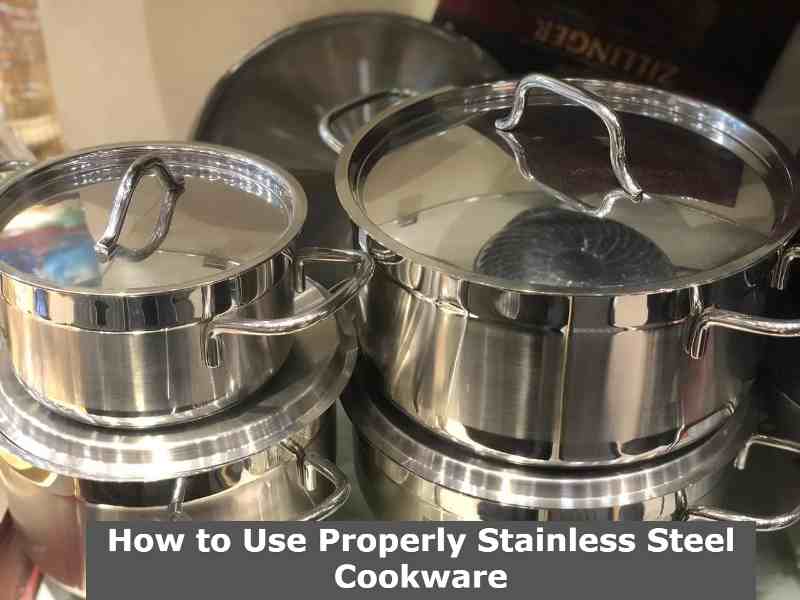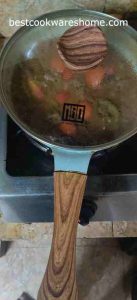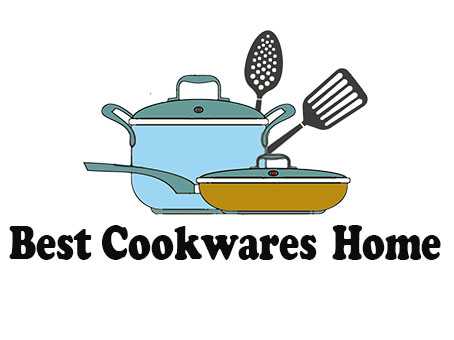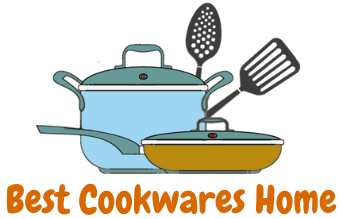 Do you want to know about How to use properly stainless steel cookware? In this article, you will know in detail the proper use and care of stainless steel cookware. Stainless steel cookware has a great deal to offer, and can surely be more versatile than the more common materials used on kitchen ranges.
Do you want to know about How to use properly stainless steel cookware? In this article, you will know in detail the proper use and care of stainless steel cookware. Stainless steel cookware has a great deal to offer, and can surely be more versatile than the more common materials used on kitchen ranges.
Stainless steel cookware offers dependability, durability, versatile cooking surfaces, and can last for decades if taken care of properly. Quality stainless steel cookware products are extremely durable because of their material composition. The bottom layer of stainless steel is magnetic which means all of our cookware products are safe to use on any type of range top, including induction and ceramic glass.
Stainless steel cookware is used by millions of people around the world. Many people choose this type of cookware because they are looking for an item that will last a very long time, in return for a relatively low price. The durability and low maintenance needed to clean stainless steel cookware also mean it has many uses and applications both in and out of the kitchen. This guide is for all types of cookware like Stainless steel cookware for gas stove or whether they are stainless steel induction cookware, you can follow the steps for use and care of cookware.
Summary
How to Use Properly stainless steel cookware
Stainless steel is a cookware material that will not rust, corrode, or bend unless improperly cared for (such as scratches). some of the chefs and housewives are worried that everything sticks to my stainless steel pan. Nonetheless, food comes into contact with the surface of the pan in preparation for cooking. Sometimes food sticks. This article aims to solve the problem and cover what, and how to clean stainless steel cookware.
Key Considerations
1. Avoid sticking food to the Pan
A set of stainless steel pans will be found in any home kitchen of today. Cooking requires the right kind of pan. The pots must be coated with a thin layer of oil before cooking or eggs or sauce will easily stick on them. The trick to preventing food from sticking to your pans includes understand your pans and using them properly is an important factor for a good result.
2. Clean Properly
A common problem for cooking is to leave the residue on the inside of a frying pan, and often need to use a towel or other tools to remove. The food stuck to the bottom of the pan is usually dried white rice, sausage, ketchup, or any other food. After washing the pan will appear on the surface of a layer of thick oil and fat, it is easy to stick again in contact with food from time to time.
3. Seasoning your Stainless Steel Pan
Seasoning the stainless steel pan is a simple process that will make it non-stick. Cooking directly on some stainless steel pans can be a challenge because the surface remains sticky even after cleaning. This will ruin your food. Luckily, you can change this by seasoning your pan with a few simple steps.
Wash the pot and dry it. Place your pan on a burner and set to low heat. Add vegetable oil into the pan, and continue heating till it discharges into the air. After finishing the oil, clean the pan with a clean towel and now your pan is seasoned.
4. Utensils For Stainless Steel Cookware
Newer makes of stainless steel cookware are nonstick, meaning they don’t need special release agents to keep foods in place. Using metal utensils can damage the coating and lead to sticking, so many cooks prefer using silicone, plastic, or wood utensils on their stainless steel cookware.
Stainless steel has a shine that makes them a little more prone to scratches than other types of cookware. As such, you don’t want to use metal utensils on them because they could ruin your beautiful kitchen utensils. However, there are ways to use these utensils with care to preserve them for many years.
4 Things to Avoid When Using Stainless Steel Cookware
Stainless steel cookware offers several advantages over aluminum or copper cookware, with an array of pros from health care, to environmental reasons to its durability.
Stainless steel cookware is a bit of an investment, but they last forever if you take good care of them. Since it’s not cheap to replace, the following are things you should avoid doing if you want your stainless steel pots and pans to last for generations.
1. Avoid Dishwasher
This will be a short article but it’s important to know never to use your dishwasher if you want to have pots and pans that last for years. Although most of these cookware items claim they are dishwasher safe, it’s not advised to put them in the dishwasher.
Normally you use your cookware in the microwave and oven as the ever-handy helpmate. This may be a bad idea since there are many situations where using them in the dishwasher is not a good idea. One should opt for wash up manually rather than using a dishwasher.
2. Don’t Wash if the Pan is Warm
The biggest mistake users make is to wash the pans when hot. You can damage the surface that way. And in this case, stainless steel means exactly that, steel will become rusty once it’s been exposed to water while warm.
3. Avoid Over Heating
Stainless Steel Cookware is the best, it is seen that its advantages are best for health and maintenance purposes. It has a shine inside and out. It gives a rich look to your kitchen. Stainless steel cookware is the cookware that you will enjoy if you are a gourmet cook or prefer to make small meals in your house every day. Stainless steel cookware has some importance while you are cooking at a high temperature.

Don’t Overheat Stainless Steel Pan – Cooking food in stainless steel cookware is a healthy alternative to cooking with Teflon coated pans, however, there are right and wrong ways to do this. If you want your food to taste good and your stainless steel pan to last then cook your food at medium heat for better results.
4. Never Use Meal Wool or Hard Scrubber
Hand washes stainless steel frying pan or any other stainless steel products always better than dishwasher to keep it shining and smooth as new.
Have you ever noticed that some stainless steel pots and pans get scratches very easily? Scratches can ruin the look of your pots and pans, but also makes the pan less safe to use in the kitchen. This is why, when cleaning these items, we must be careful on how to handle them. Although most of these cookware items claim they are dishwasher safe, it’s not advised to put them in the dishwasher.
Cleaning the stainless steel can be quite easy. You just need a few things and a bit of effort. Cleaning them now and then will help maintain their shine and prolong their lifespan.
Related: Using Stainless Steel Cookware First Time
Frequently Asked Questions (FAQs)
Here we are going to discuss some important questions and answers related to how to use properly stainless steel cookware?
How to clean a seasoned stainless steel pan?
Seasoning stainless steel pans is one of the easiest ways to care for them. Seasoning means filling the pores in the metal with oil so food doesn’t stick when you cook with it. It makes cleaning easy and, over time, makes your pan nonstick.
Here are some simple steps to follow
1. Wash your skillet in hot water with some dish soap. This will rid the pan of any grime or food particles that might be sticking and also make sure the pores on your skillet are clean and ready to soak up the oil.
2. Rinse off the soap with warm water and allow it to dry completely.
3. Rub some oil into the clean skillet using paper towels or a paper towel with a rag. This will fill up your pan’s pores with oil, thus creating a barrier between your pan and food.
How to maintain a stainless steel pan?
Stainless steel cookware can be tricky to take care of since it does not provide any nonstick properties like other types of cookware. This means that the food must be properly seasoned or oiled prior to cooking to ensure easy meal preparation. Stainless steel, unlike other metals like copper and aluminum, is highly resistant to rust and corrosion. This makes it easier to maintain than others.
Never again scrub rusty stains off your stainless steel pans with harsh cleaners. By following these tips and tricks, you’ll easily keep a clean kitchen that stays non-stick, with no flaking, bubbling or peeling in your stainless steel cookware.
How to preheat stainless steel pan?
Preheating a pan before adding ingredients is a crucial step in cooking. The goal of preheating the pan is to evenly distribute heat for optimum cooking. Another benefit of preheating the pan is that it helps you maintain control of your food.
One of the methods by which you can check if your pan is heated is to pour a few drops of water into it. Ideally, you should be aiming at having a pan that’s heated through and through. The fast and easy way to do this is by testing it in a drop of water
How to cook with stainless steel pans?
These are just a few of the great tips in this article that can help you cook like a pro with your stainless steel pans. You need to master proper cleaning and seasoning procedures in order to optimize their lifespan and to get the most out of your pan.
Cook them over low heat. It will make sure that food does not burn and stick to the pan. It will prevent food from sticking to the surface of the pan. After heating your pan over low heat for five minutes, it is now ready to cook your food. The food will not stick to the surface as it would have been if you were using high temperature. Always preheat your stainless steel pans before starting to cook anything with them. It helps keep foods from sticking to the bottom of the pan. Also, remember to use medium or low heat when cooking with stainless steel pans.
What is a stainless steel pan good for?
A stainless steel pan is a standard household kitchen item. It is used to cook all kinds of things from omelets to casseroles to stir fry to spaghetti sauce.
Stainless steel pans are the favoured cookware for many chefs because they are strong and can withstand high temperatures that would damage aluminum or copper pans. There are also some great non-stick varieties of stainless steel with the same advantages. You’ll still be able to use metal utensils on it without worrying about scratching or damaging your pan.
If you have a stainless steel pan, you’ll know that they are excellent for making sauces or stews. Stainless steel pans are also great for making soups, especially boiling down broth to concentrate it.
How to season a stainless steel pan?
The “seasoning” process will create a thin layer of nonstick oil on the surface of the pan that helps food slide without sticking. Before each use, you should be cleaning and seasoning your stainless steel pan, then re-covering with oil.
All you need to do is put a small amount of oil on the pan in order to gain visual confidence that the pan is ready to use. When you place your food in the pan, you want to make sure that there is no excess oil remaining on the pan or on the food itself. Over grilling or undercooking can cause food to become tough and dry, not to mention potentially dangerous if handled improperly
Using stainless steel cookware first time
Before using a stainless steel enameled cast iron skillet, place a small amount of tablespoon of oil on a paper towel. Gently wipe the metal off with a paper towel before use.
Once the pan is preheated and properly oiled, add the food to be cooked. If you’re cooking eggs, make sure to use enough oil so that it covers half the pan. This will help prevent sticking.
To clean your stainless steel pan, fill it with hot water and add some soap. The hot water will help loosen any food residue left in the pan after cooking. After cooking, always quickly dry your pans with a soft cloth or paper towel.
How to make a stainless steel pan non stick?
There are a lot of ways to make stainless steel pan nonstick, but this is my favourite of all. To begin, wash your stainless steel pan thoroughly. This will remove any leftover build-up from nights past. Then set it on the stove on medium to high heat and let it get hot before you start to cook. You’ll know your pan is ready when you splash some water onto it and the water dances around the surface of the pan. The reason this works is that your stainless steel pan is ready to start properly cooking your food as soon as it starts to evaporate.
Can you use cooking spray on stainless steel pans?
Nonstick cooking spray is sprayed onto a kitchen pan to make sure food easily slides around and comes off the pan. Cooking spray or vegetable oil spray is sprayed onto a pan to keep foods from sticking and to promote even browning. Some cooks prefer it to butter or other fats because food doesn’t brown as readily in fat. It provides an added level of protection against sticking and burning, and it is used on many different foods.
Is it safe to cook with stainless steel?
Stainless steel is a popular choice for cookware. While there are various grades of stainless steel, they all have one thing in common, they have chromium in all the stainless steel cookware. Stainless steel cookware is preferred by many for its versatility, and ability to resist corrosion and rust.
Stainless steel is most often used as a food contact material, meaning it is safe to use for storing and cooking food. In some cases, stainless steel can be harmful if it has not been properly treated or cleaned.
Read More: Best non toxic stainless steel cookware
Conclusion
Over time, stainless steel cookware can become dull and inedible. You need to consider the factors above when choosing the right sized pan, and remember to use it correctly to get the most out of your cooking experience.
How to use properly stainless steel cookware? Some people think that stainless steel is less durable than other types of cookware, but this is not true. Stainless steel is fully heat-resistant up to 500°F (260°C), which is more than golden cast iron and even charcoal. The key to using properly stainless steel is to always use the highest quality cooking oil available. Avoid using cheap cooking oil that has a lot of additives or tastes funny when mixed with water.
Always clean properly after cooking and use a soft cloth in the cleaning of stainless steel cookware. use wooden or nylon utensils and avoid metal utensils while cooking in stainless steel cookware, in this way your cookware can stay longer with you.
Related Post
Zwilling Stainless Steel Cookware Reviews

Hi, Welcome to our Blog. We are a team of Professional Blogger and expert in Cookware, Kitchen Appliances. We Work for the latest Reviews for Cookware, Kitchen Appliances. You can give us your kind Suggestions for improvements of Blogs, Thank You
